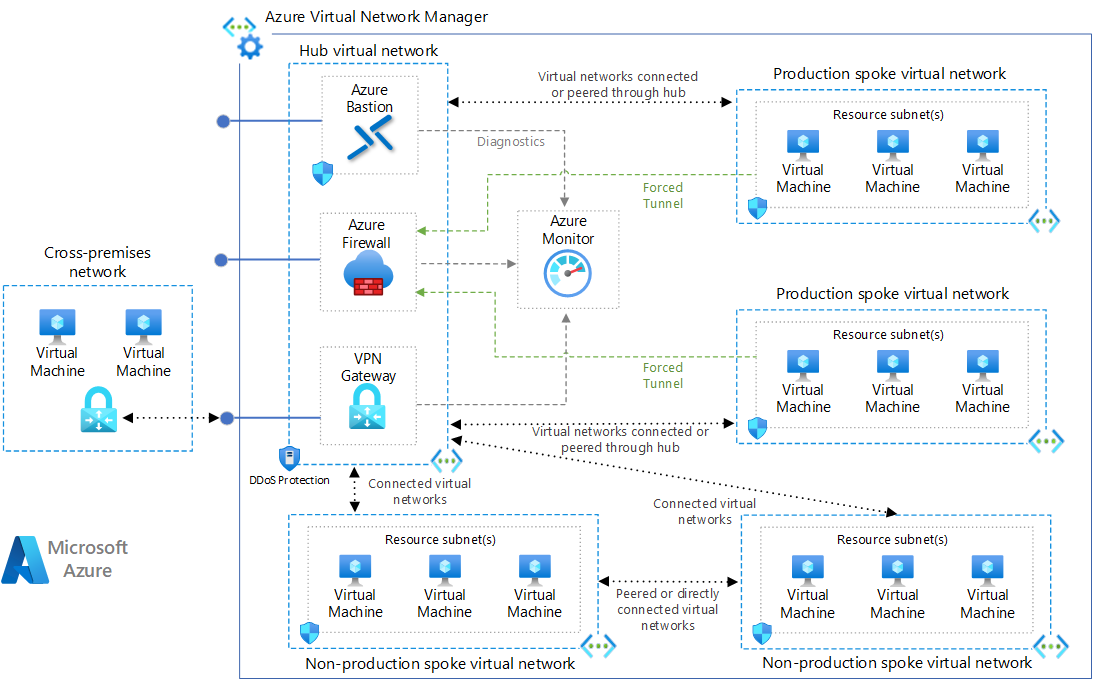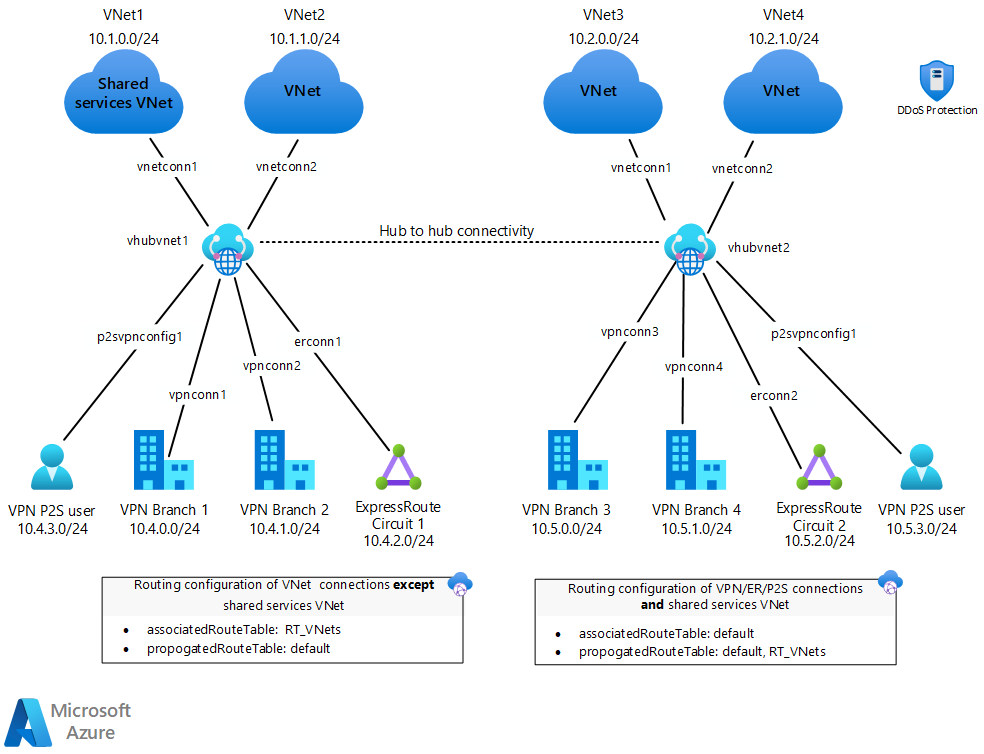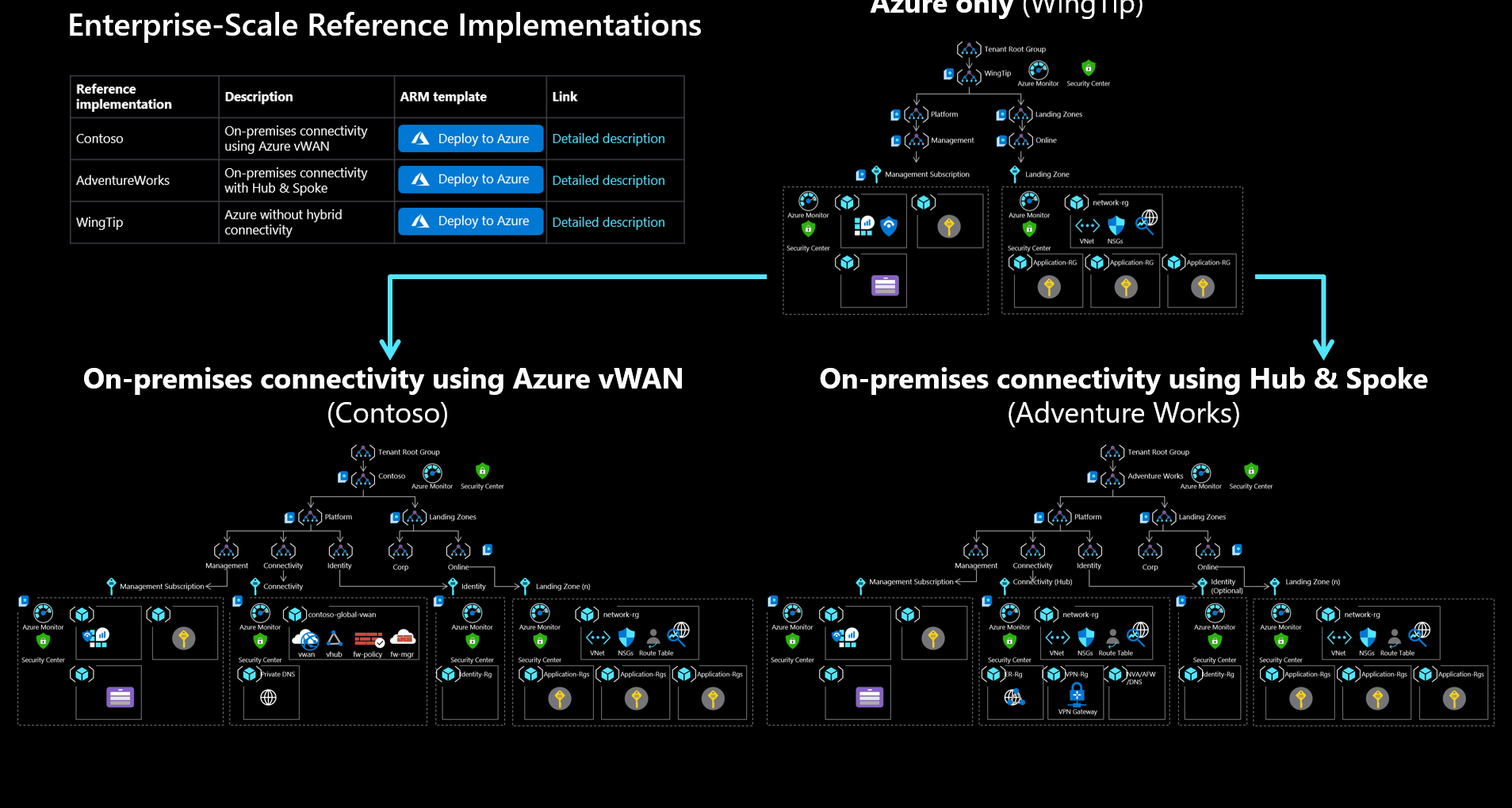In this blog, we’ll delve into the core steps of making informed decisions on your network architecture, choosing between the classic Hub-and-Spoke or Azure Virtual WAN networking architecture.
Introduction
Azure’s network architecture is the backbone of cloud operations, and choosing the right model is critical for IT professionals managing cloud connectivity. In this blog, we delve into the essential network architectures of Azure: Hub-and-Spoke and Azure Virtual WAN. This blog provides a straightforward overview of these models and emphasizes the practical importance of making informed choices. As we navigate through the technical intricacies, you’ll gain insights into how each architecture impacts your cloud infrastructure, helping you make decisions that align with your IT goals and operational requirements. Keep on reading if you’re interested in demystifying the complexities of Hub-and-Spoke vs. Azure Virtual WAN, for a comprehensive understanding of Azure’s network landscape.
When refered to “Hub-and-Spoke” in this article, I specifically address the traditional or classic Hub-and-Spoke architecture. It’s important to note that Azure Virtual WAN is also categorized under Hub-and-Spoke, albeit with innovative enhancements. While Azure Virtual WAN inherits the fundamental principles of Hub-and-Spoke, it introduces modern elements that redefine connectivity, scalability, and operational efficiency.
Hub-and-Spoke
The Hub-and-Spoke architecture serves as a foundational network model within Azure, providing a structured and scalable approach to connectivity. In a Hub-and-Spoke topology, the primary components include:
- Hub: The central virtual network that acts as the nucleus of connectivity. Hosting shared services like Azure Bastion, Azure Firewall, or Azure Virtual Network Manager, the hub becomes a centralized point for managing cross-premises networks.
- Spokes: Individual virtual networks connected to the hub. Each spoke operates independently, maintaining its unique workloads and resources. Spokes can represent distinct environments, such as production and non-production, providing a versatile structure for workload isolation.

The traffic dynamics in Hub-and-Spoke are vital for understanding its functionality. Traffic between on-premises data centers and the hub flows through either an ExpressRoute or VPN gateway. This ensures secure and efficient communication, enabling seamless integration of on-premises resources with the Azure environment.
Typical Use Cases
Hub-and-Spoke is particularly advantageous in scenarios that demand:
- Workload Isolation: Each spoke serves as an isolated environment, allowing for the independent development, testing, and deployment of workloads. This structure is valuable for maintaining distinct environments, such as development, testing, and production.
- Shared Services: Environments with shared services requirements, such as DNS, Network Time Protocol (NTP), or Active Directory Domain Services (AD DS), find Hub-and-Spoke beneficial. The hub becomes a central repository for these services, streamlining management and ensuring consistency across spokes.
Implementation Tips, Recommendations, and Considerations
To effectively implement Hub-and-Spoke, consider the following:
- Resource Group Structure: While a single resource group is feasible, structuring the hub and each spoke in different resource groups or subscriptions enhances management and scalability.
- Virtual Network Peering: Establish peering connections between virtual networks using Azure Virtual Network Manager or Azure Portal. This enables seamless communication while maintaining isolation between environments.
- Gateway Configuration: Depending on the specific connectivity requirements, evaluate the need for either an ExpressRoute or VPN gateway. This decision impacts the overall network performance and availability.
- Scalability and Segmentation: Plan virtual network structures with scalability in mind, ensuring logical segmentation for different environments or workloads. This approach facilitates efficient management as your network grows.
In essence, Hub-and-Spoke offers a robust framework for network architecture, fostering scalability, workload isolation, and centralized management of shared services.
Azure Virtual WAN
Azure Virtual WAN stands as a transformative managed service, redefining network connectivity within the Azure ecosystem. Azure Virtual WAN emerges as a fully managed service, simplifying the network architecture landscape. It reimagines the traditional hub, offering an integrated solution that streamlines network management and enhances overall connectivity. Understanding Azure Virtual WAN involves recognizing its fundamental components and the advantages it brings:
- Hub as Virtual WAN: In Azure Virtual WAN, the hub is essentially a Virtual WAN with meticulously configured security and routing policies. This paradigm shift eliminates the need for manual user-defined routes, offering a more automated and streamlined network infrastructure.
- Transitive Spoke Connectivity: Spokes in Azure Virtual WAN connect through the Virtual WAN, establishing a transitive relationship among them. This means spokes can communicate with each other without necessitating dedicated peering connections. This capability addresses the limitations found in traditional hub-and-spoke topologies.

One of the noteworthy features of Azure Virtual WAN is the concept of a secured virtual hub. This specialized hub comes equipped with built-in security measures and routing configurations. Azure Firewall Manager orchestrates security policies within the secured virtual hub, enhancing the overall security posture of the network. The inclusion of built-in routing in the secured virtual hub is a game-changer. Unlike traditional approaches requiring user-defined routes, this automated routing mechanism further simplifies network management, reducing operational complexities.
Azure Virtual WAN revolutionizes connectivity by offering a full meshed hub structure that enables various connectivity scenarios, including branch-to-branch, branch-to-Azure, and VNET-to-VNET connections. Additionally, by enabling the creation of a global transit network architecture, Azure Virtual WAN empowers organizations to establish versatile any-to-any connectivity among globally distributed sets of cloud workloads.
Implementation Tips, Recommendations, and Considerations
To optimize Azure Virtual WAN implementation, consider the following:
- Virtual WAN Tier Selection: Choose between Standard and Basic Virtual WAN tiers based on specific requirements, such as scaling for higher throughputs, private connectivity, or integrated monitoring with Azure Monitor.
- Address Range for Virtual Hubs: When creating a Virtual WAN hub, ensure a minimum address range of /24. This IP address space serves as the foundation for reserving subnets for gateways and other essential components.
- Consideration for Secure Hubs: Evaluate the need for a secured virtual hub based on the security requirements of your network. Azure Firewall Manager plays a pivotal role in configuring and managing security policies within the secured virtual hub.
In essence, Azure Virtual WAN redefines network management with its managed service approach, introducing automation, enhanced security, and versatile connectivity options.
A Head-to-Head Comparison
When deciding between Hub-and-Spoke and Azure Virtual WAN, understanding their nuances is crucial. Let’s break down the key aspects of each architecture to help you make an informed choice based on your specific requirements.
Connectivity
In the Hub-and-Spoke model, connectivity is centralized, providing a structured environment for managing workloads. Spokes connect to the central hub, offering controlled communication. This setup is beneficial when central control over connectivity and isolated workload management are essential.
Azure Virtual WAN redefines connectivity by enabling any-to-any communication. This allows spokes to establish transitive relationships, streamlining network architecture. For scenarios demanding flexible and dynamic connectivity, Azure Virtual WAN stands out.
Security
With Hub-and-Spoke, security control is centralized, making it easier to manage and monitor. The potential for mixed VPN and ExpressRoute usage provides flexibility in choosing secure connectivity options based on specific needs.
Azure Virtual WAN simplifies security with centrally managed secured hubs. The reduced operational overhead and built-in routing enhance security, minimizing the risk of misconfigurations. This approach offers a robust security solution without compromising efficiency.
Cost and Efficiency
Hub-and-Spoke excels in cost efficiency, overcoming subscription limits, and ensuring effective workload isolation. The model leverages shared services across different environments, contributing to overall savings.
Azure Virtual WAN introduces cost savings by eliminating the need for network virtual appliances. The managed service approach reduces operational overhead, making it a financially efficient choice for organizations.
Flexibility and Scalability
The Hub-and-Spoke model provides standard advantages, accommodating mixed VPN and ExpressRoute usage. This flexibility ensures adaptability to diverse networking requirements.
Azure Virtual WAN offers a full meshed hub, promoting any-to-any connectivity within a single hub. This architecture enhances scalability, supporting large-scale site-to-site performance efficiently.
Considerations
Hub-and-Spoke is ideal for scenarios requiring centralized control and isolated workload management. Azure Virtual WAN is best suited for those seeking a simplified, cost-effective, and highly scalable solution. Hub-and-Spoke offers traditional control and security, while Azure Virtual WAN provides a modern, efficient, and scalable alternative.
Both the Hub-and-Spoke and Azure Virtual WAN reference implementations are readily available within the Enterprise Scale Landing Zones. Microsoft provides a wealth of downloadable code, crafted in Bicep, Terraform, and other formats, offering flexibility in deployment options. These reference implementations serve as valuable blueprints, empowering organizations to efficiently establish robust network architectures tailored to their specific needs.

In summary, the choice between Hub-and-Spoke and Azure Virtual WAN depends on specific organizational needs. Evaluate each category’s intricacies to align your decision with overarching IT goals and operational requirements.
Closing Words
In the traditional Hub-and-Spoke model, connectivity is centralized, offering controlled and isolated workload management. On the other hand, Azure Virtual WAN revolutionizes connectivity with any-to-any communication, enhancing scalability and reducing operational overhead.
Making informed decisions for Azure network architectures is pivotal for IT professionals navigating the cloud landscape. Understanding the specific requirements of your organization and weighing the nuances of each model will guide you in choosing the architecture that aligns seamlessly with your IT goals. Whether you’re opting for the familiarity of Hub-and-Spoke or the innovation of Azure Virtual WAN, your informed decisions will shape a resilient and efficient network architecture, driving the success of your cloud operations.
If you wish to learn more about Hub-and-Spoke and/or Azure Virtual WAN, here are some more resources to help you forward:
- Hub-spoke network topology in Azure - Azure Architecture Center | Microsoft Learn
- Hub-spoke network topology with Azure Virtual WAN - Azure Architecture Center | Microsoft Learn -Connect an on-premises network to Azure - Azure Architecture Center | Microsoft Learn
- Virtual WAN documentation | Microsoft Learn
Thank you for taking the time to go through this post and making it to the end. Stay tuned because we’ll keep continuing providing more content on this topic in the future.
